Posts from — January 2011
Louisiana’s budget challenges
As part of the “We’re not alone in this” series of posts, here’s the latest in higher ed budget challenges.
Louisiana’s Board of Regents has identified more than 450 academic programs at the state’s public universities that will have to defend themselves against potential elimination because of low enrollments, The Advocate of Baton Rouge reported.
The regents said the larger number of programs targeted — the board has cut a total of 245 programs the last two years — was necessary if Louisiana’s public universities are to remain efficient and focused as the state faces continuing budget cuts.
Programs will have until February to argue that they should be consolidated or continued instead of cut, the Advocate reported; a final report is due in April.
1 of Many
Passion Rules!
January 27, 2011 No Comments
Legislature begins budget discussions
As lawmakers take steps to cut state spending this year, their budget axes are expected to hit universities in ways that could eliminate jobs and some degree programs. Republicans taking charge of the state’s budget for the first time since 1898 are promising deep cuts to close a projected $3.7 billion gap. And the $2.7 billion total the state budgeted last year to run the University of North Carolina’s 16 campuses isn’t off limits, said expected Senate leader Phil Berger, R-Rockingham.
“For anyone to suggest that any part of the state budget is going to be immune from consideration for reductions, they’re not looking at the situation in a realistic fashion,” Berger said this week.
Some $620 million in state funds were cut in the past four years and mostly took a toll on administration, so further trims will be felt by students, said Jeff Davies, the UNC system’s top operating officer. [Read more →]
January 26, 2011 No Comments
We are not alone with our budget challenges
‘Apocalyptic’ Budget Sends Waves of Fear Across Texas Higher Education
By Katherine Mangan
Texas higher-education officials were reeling on Wednesday after lawmakers released a preliminary budget proposal that would slash financial aid, close four two-year colleges, and eliminate programs aimed at meeting the needs of the state’s growing Hispanic population.
Republican lawmakers in the House, who have gained a stronger majority since November’s elections, have vowed to plug a state deficit estimated at up to $27-billion over the coming biennium without raising taxes or tapping into the state’s $9.4-billion rainy-day fund. [Read more →]
January 20, 2011 No Comments
Trenta cup spells commoditization of Starbucks
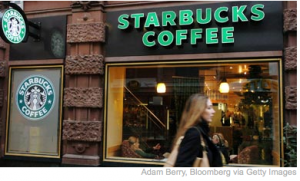
I’ve been kind of harsh on Starbucks Coffee lately as the company works to roll out a new logo and possibly, a new brand image. I think the approach they are taking is a bad move as evidenced from earlier posts, but now I’m convinced the Starbucks we have grown to love and patronize is rapidly disappearing.
Witness the Trenta, a 31 ounce behemoth of coffee. Think of the Double Whopper or Wendy’s triple-stack. It’s just ridiculous. [Read more →]
January 18, 2011 No Comments
Another year, another budget cut for public universities in North Carolina
Vacant positions won’t cushion much of the blow from budget cuts at University of North Carolina system campuses this year, UNC officials said Thursday. Public universities have put plans together to deal with budget cuts of 5 percent and 10 percent for 2011-12, and data presented to the UNC Board of Governors on Thursday suggest large job losses. A 10 percent cut could lead to 2,000 job cuts across the system, including 1,000 faculty members, according to data discussed by the board. A 5 percent cut would eliminate 900 positions, including 400 faculty members. Systemwide, UNC has about 47,000 employees.
The cuts would help the state close a budget gap estimated at more than $3.7 billion. The system has taken more than $600 million in cuts over the past four years. But campus chancellors had long planned for cuts by holding positions open rather than filling them. Doing so has protected at least some workers from layoffs — until now. “We have pretty much cleared out those vacant positions,” said N.C. Central University Chancellor Charlie Nelms. “They’re pretty much gone. Now we’re talking about people.” [Read more →]
January 14, 2011 No Comments
How Starbucks violated the Primal Code
There has been a lot of discussion about the new Starbucks Coffee logo. Actually, “Coffee” is no longer part of the logo, just the mermaid. So what is Starbucks, an aquarium or a gathering place where people can meet and enjoy coffee and all the accoutrements. The new logo implies the former.
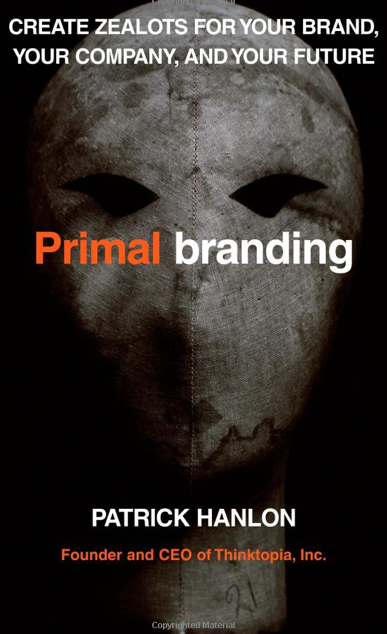
Over the years I’ve become a fan of Patrick Hanlon’s approach to branding, Primal Branding. I’ve blogged about Hanlon before, but the impact his Primal Code can have on a product or institutional brand is hard to deny.
At just about every place I’ve worked, (Harley-Davidson, Sea-Doo, Wellcraft, Donzi, The University of Florida, NC State) the primal code abounds and because of that, success has followed.
Hanlon’s premise is pretty simple. “When people believe, they belong. When they belong to the group that surrounds your product or service, they are willing to advocate their belief to others.” The elements that lead people to believe can be found in the Primal Code:
- The Creation Story: Where are you from?
- The Creed: What do you stand for?
- The Icons: Logos, sounds, smells, tastes.
- The Rituals: Repeated interactions with your enterprise.
- The Pagans or Nonbelievers: Who are the believers? Who are the outcasts?
- The Sacred Words: Specialized words from your belief system.
- The Leader: The risk taker, catalyst, iconoclast, visionary.
I thought Starbucks had them all until they unveiled a new logo last week. Now I’m not so sure. Just what is the company’s commitment to the brand; the brand we know today. [Read more →]
January 10, 2011 No Comments
Starbucks introduces new, less memorable, logo
Big deal. I don’t like it. Lacks the distinction and “tradition” the former logo had. If you really want to reach people in China, better tell them your name.
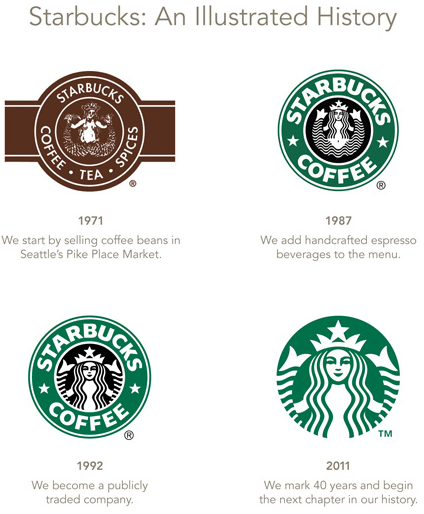
Starbucks gives the following reason for the change: The change reflects the company’s efforts to expand both internationally and through a wider array of menu and consumer-product items. Starbucks last month said that it will increase its store count in China sevenfold by 2015, while encouraging more daily food- and beverage-buying periods, or so-called “dayparts,” by adding new in-store menu items.  http://srph.it/fbgW3R
Really? It doesn’t say that to me. To me it says ho hum. Soft lines. Lack of distinction. Losing its differentiation. Boring.
Our youngest daughter loves green though. She’ll be excited.
Not as bad as GAP’s recent logo change, but a non-winner in my book.
1 of Many
Passion Rules!
January 5, 2011 No Comments
Followers are no measure of influence?
Not so sure about this one.
I’ve espoused the belief that social media is just a tool that helps build your personal network. You have your 1,000 Facebook friends, 2,500 followers on Twitter and 500 followers of your bolg and you’ve got a network. A pretty big one at that. If you keep building that network, who knows where you will be in five, 10, 20 years. A huge network with huge influence. Or at least a huge network with the potential of having huge influence.
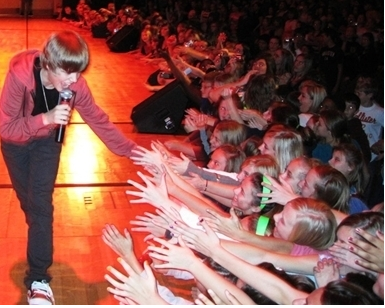
Justin Bieber has 6.4 million followers on Twitter
What you say on your network helps define your “programming.” Some of us are more like PBS or BBC, while others are like FOX and Speed TV. Some are deep, some are shallow, but they each wield influence in different ways.
But whatever your programming may be, the more followers you have — the bigger your network — the more influence you have. People wouldn’t be following you unless they were interested in what you had to say. At least that’s what I used to think.
There’s an interesting column by Matthew Creamer in Advertising Age Magazine today that questions that notion. Creamer has reviewed a number of studies and talked to opinion leaders about the importance of followers and influence. http://bit.ly/hDDLqH
Near the end of the column he quotes Amber Naslund, VP at the social-media monitoring firm Radian6. Naslund says, “To me, influence isn’t about popularity. Or even reach. It’s about the trust, authority, and presence to drive relevant actions within your community that create something of substance.”
January 3, 2011 No Comments
Urban Meyer and higher education
I talked about Urban Meyer’s resignation from the University of Florida about this time last year. He had resigned but changed his mind and came back. Today against Penn State he really did coach his last game at Florida so I’m at it again.
Urban Meyer was an interesting character. Intense. Focused. Creative. Smart. Inspirational. Devoted. Everything you’d ever want in a coach and leader.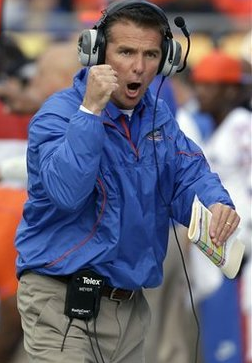
My first experience with the coach was coincidental. I was meeting with UF President Bernie Machen and I could tell something was up. The office was a buzz and Dr. Machen interrupted our meeting to take a phone call. I think I heard him say, “So, we’ve got a deal.â€Â Later that day we got the news that UF had hired Meyer as its head football coach. Pretty cool I thought, to be in the president’s office when the deal went down.
Our office worked with athletics on a regular basis and the coach and all his players understood the student/athlete – university/athletics relationship. They provided a window to the outside that we needed to help tell our story. But that story wasn’t just about athletics. The most important story was about the students and what the university meant to them and what they meant to the university.
Meyer was happy to help tell that story and you never saw him (or any of his coaches and players) do an interview or give a talk when he didn’t talk about the importance of that relationship and the students he was responsible for.
January 1, 2011 No Comments
